A thing resembling a vertically stretched turtle stood inside some living block in the center. Could be an old playground device covered to prevent usage.
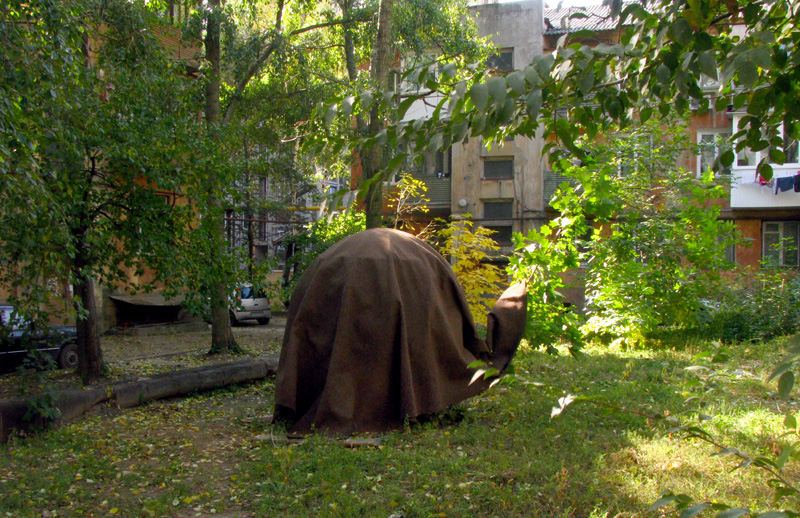
My third visit to Donetsk was contentful, in contrast to the previous two. Some interesting and not interesting places were visited with friends or on my own.
A thing resembling a vertically stretched turtle stood inside some living block in the center. Could be an old playground device covered to prevent usage.

A block of old outside closets near an old living house in the center.
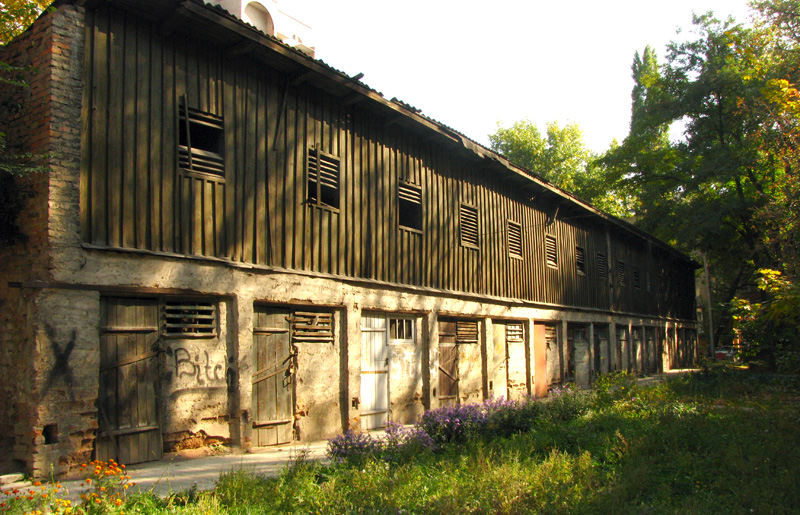
This brutal architectural detail resembles a spine and ribs, doesn't it? Or a Scolopendra robusta, perhaps?
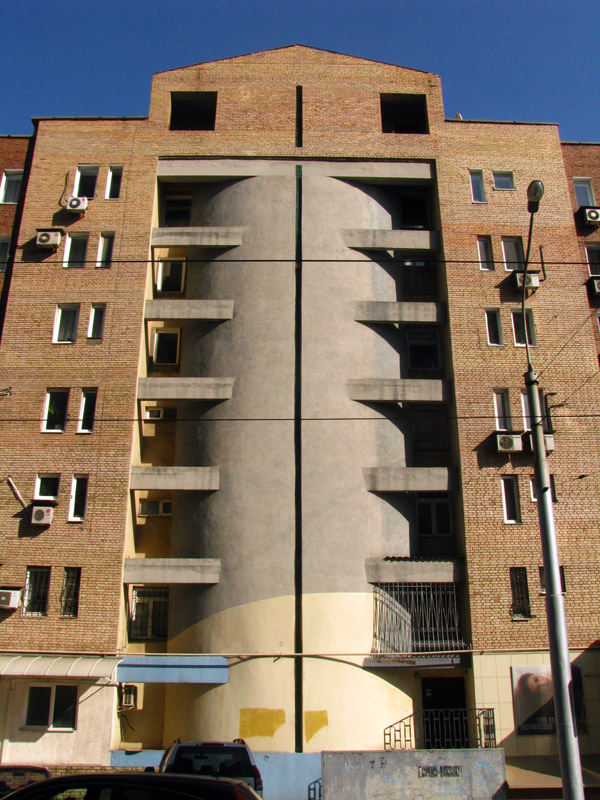
I moved in a pseudo-random direction, because I haven't been anywhere and everything was new to me. A random street turned out to be a whole avenue of Lenin's patronymic — Ilyich, that is. It was under renovation. Perhaps, due to the Euro-2012. Here is how it looked like in the direction of the Kalmius reservoir.
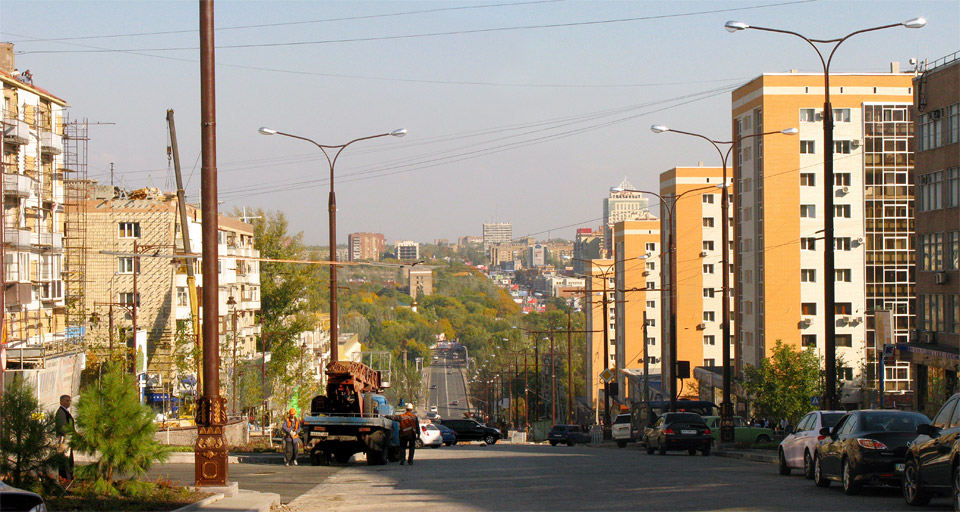
The quay of the reservoir with the end of some trolleybus routes. This old and broken trolleybus was the office of route dispatcher.
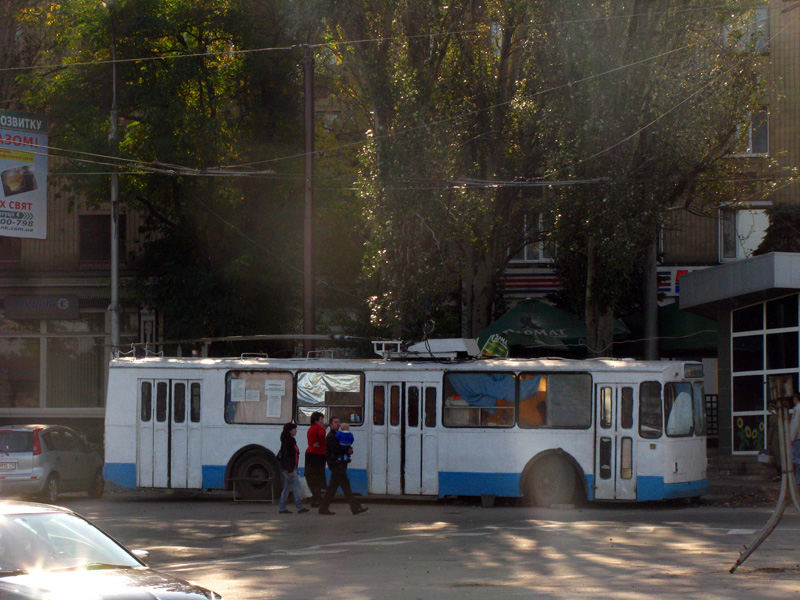
The Kalmius reservoir itself.
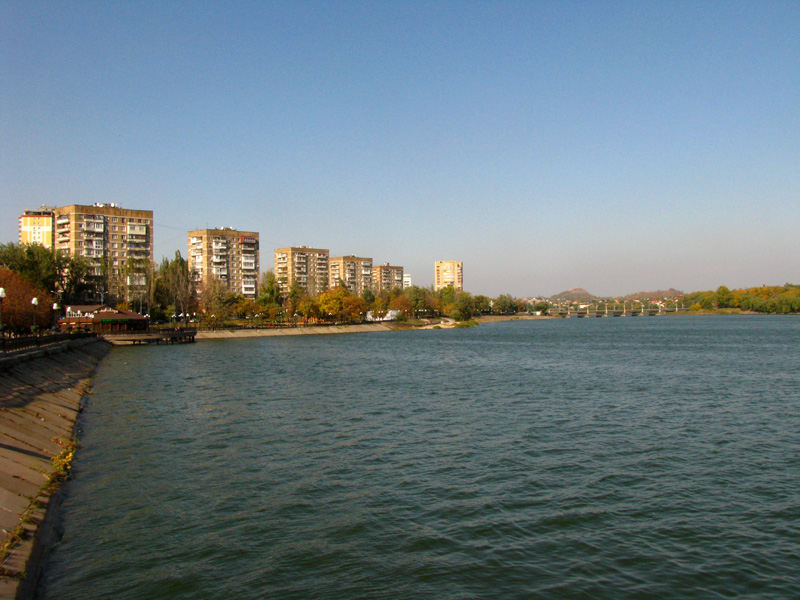
The «No GMO» made its way onto the external shop walls.
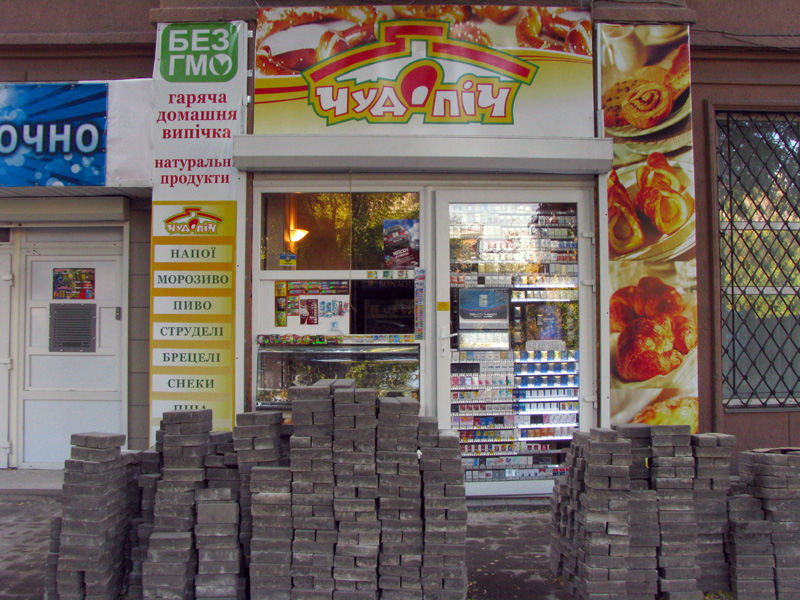
I headed back to the other side if Donetsk center — Shcherbakov's park. Passed by the trees that were first to start turning yellow this autumn. These were on the Teatralny avenue.
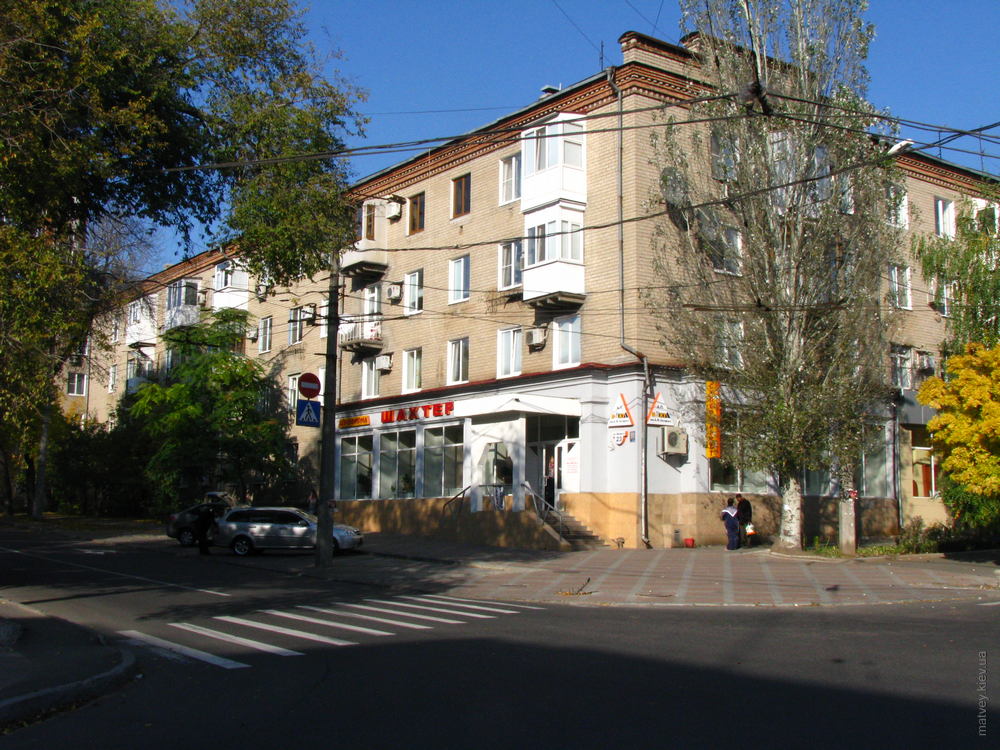
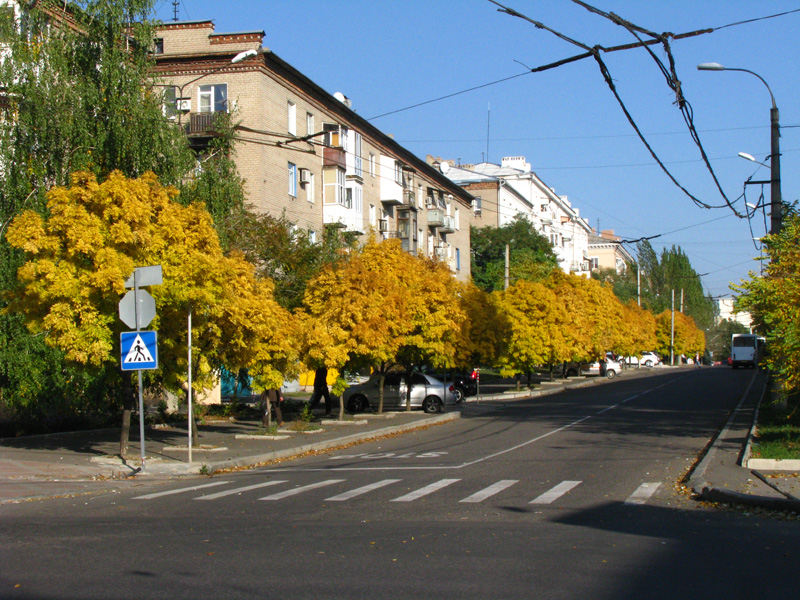
Found an old german-built two-storied house in Donetsk, too.
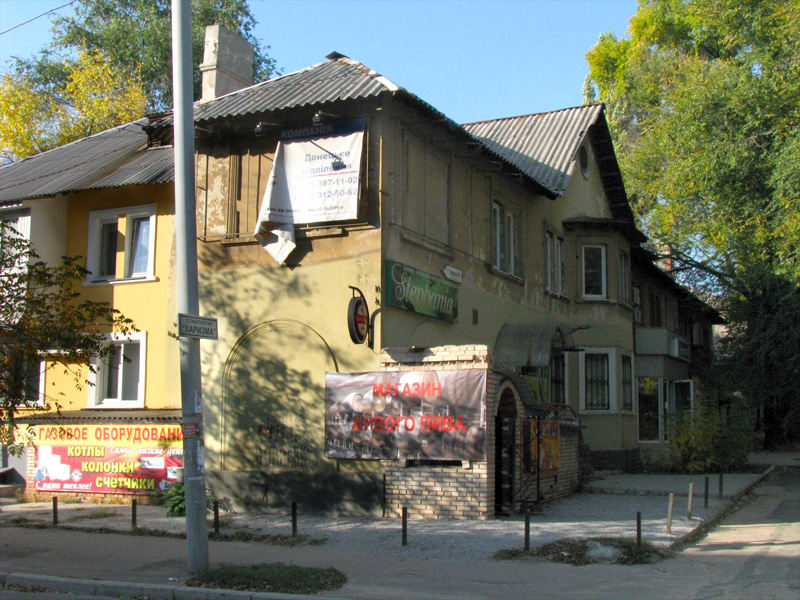
Passed by this composition in the very end of the avenue — these were the gates of the gas operator headquarters.
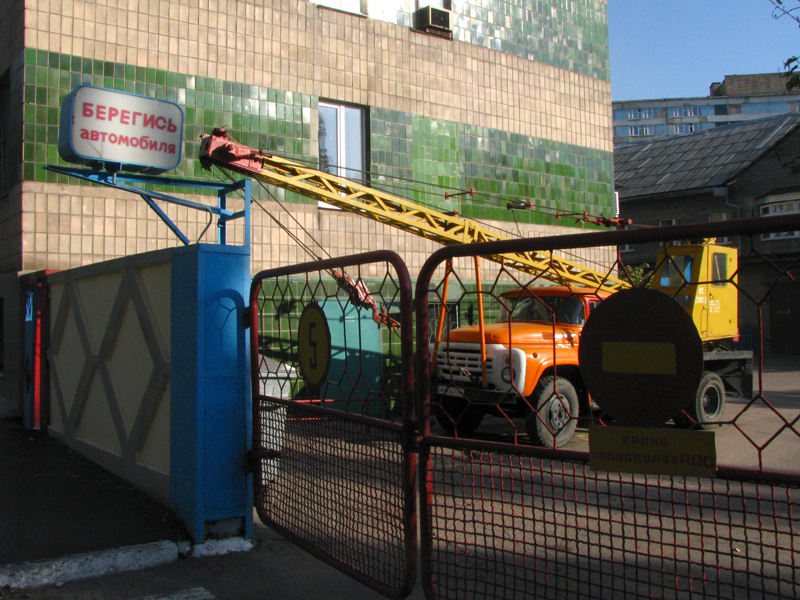
Teatralny ave became a scary ground path among the garages and trees. That path crossed an industrial railway branch and led me to a footpath that went along the ponds. The footpath was accompanied by a pipe.
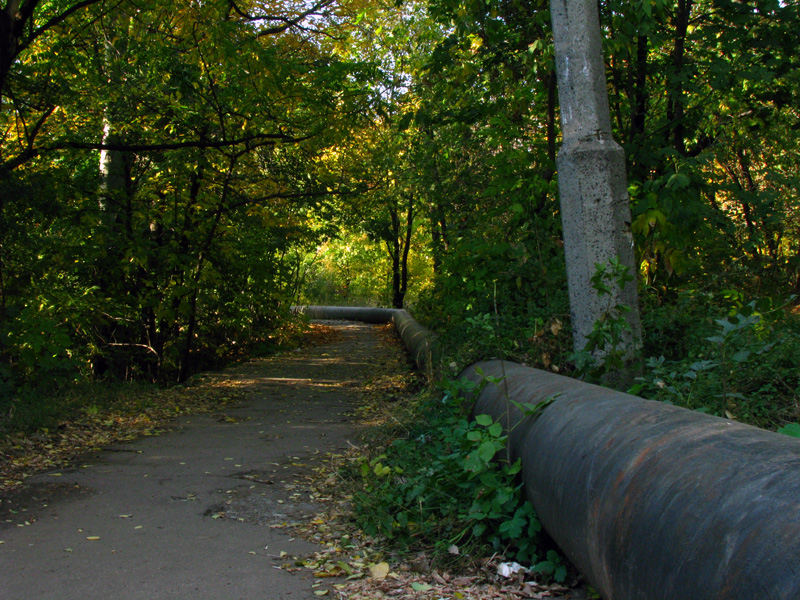
The railway traffic was strong here. I saw three or four trains during my 30 minutes close to the rails.
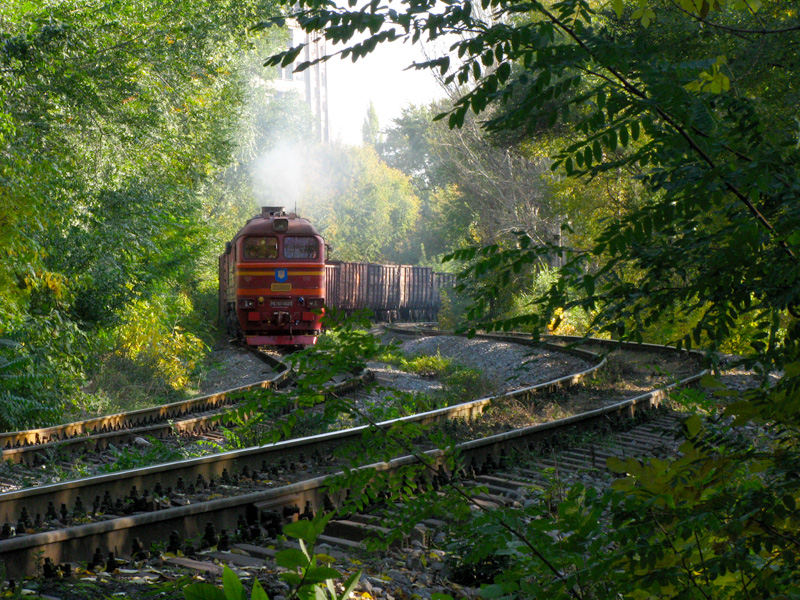
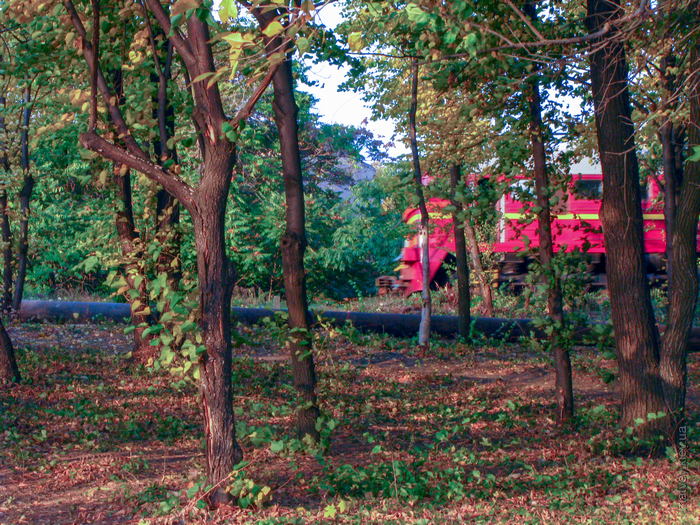
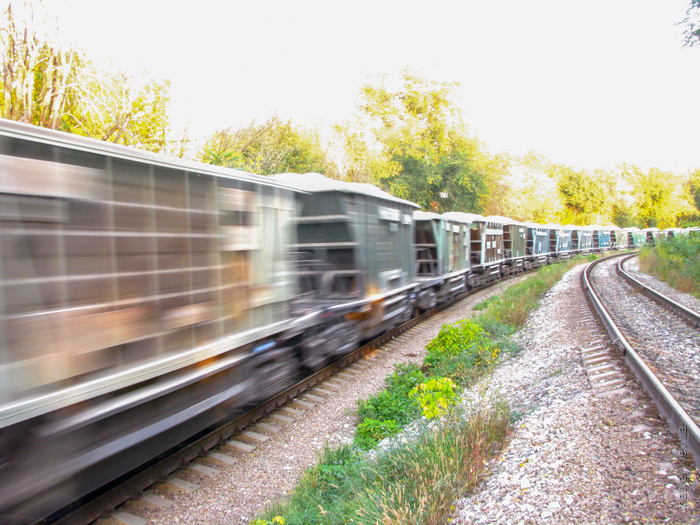
There was a lot of garbage on the shores of the pond. People were resting on these shores. The footpath was being used by moms with strollers and runners. A seldomly seen thing on the surface — a dredger's head — was lying near.
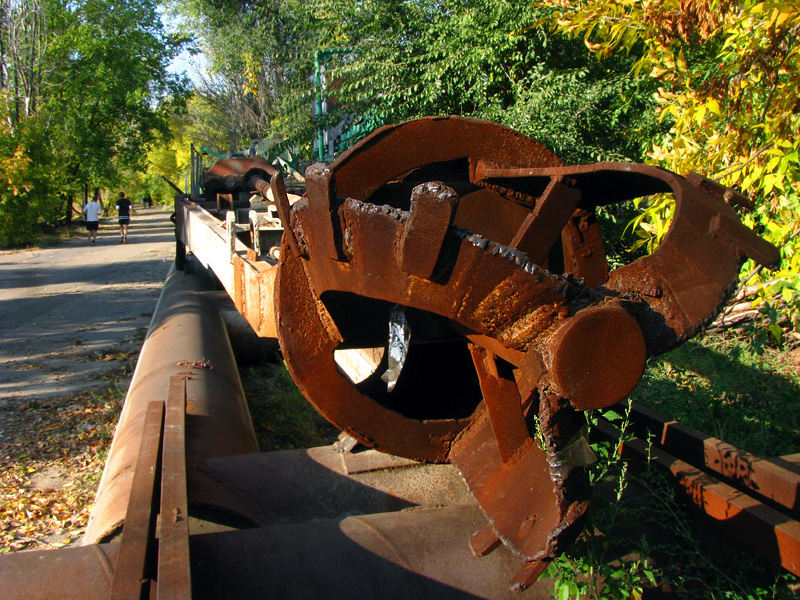
A metallic pier was sticking out into the pond.
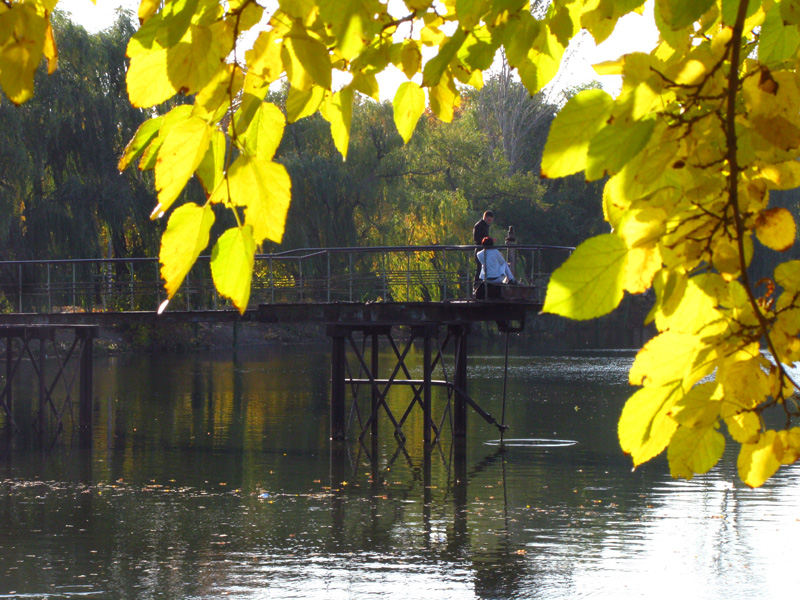
There was a whole dam with an open and freely accessible spillway here. Wow. I love such places since I was a kid. The small river on which the ponds were made is called Bakhmutka or Skomoroshynka.
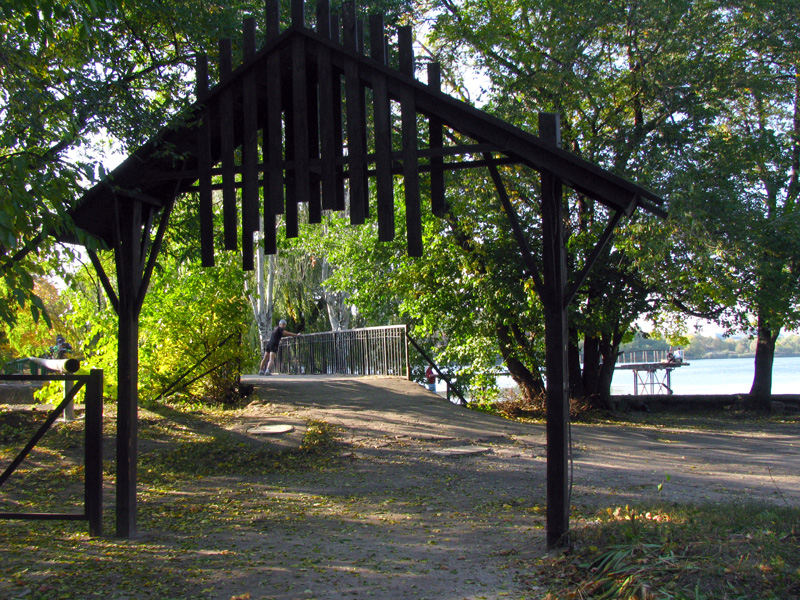
The dam between the ponds had a noticeable height.
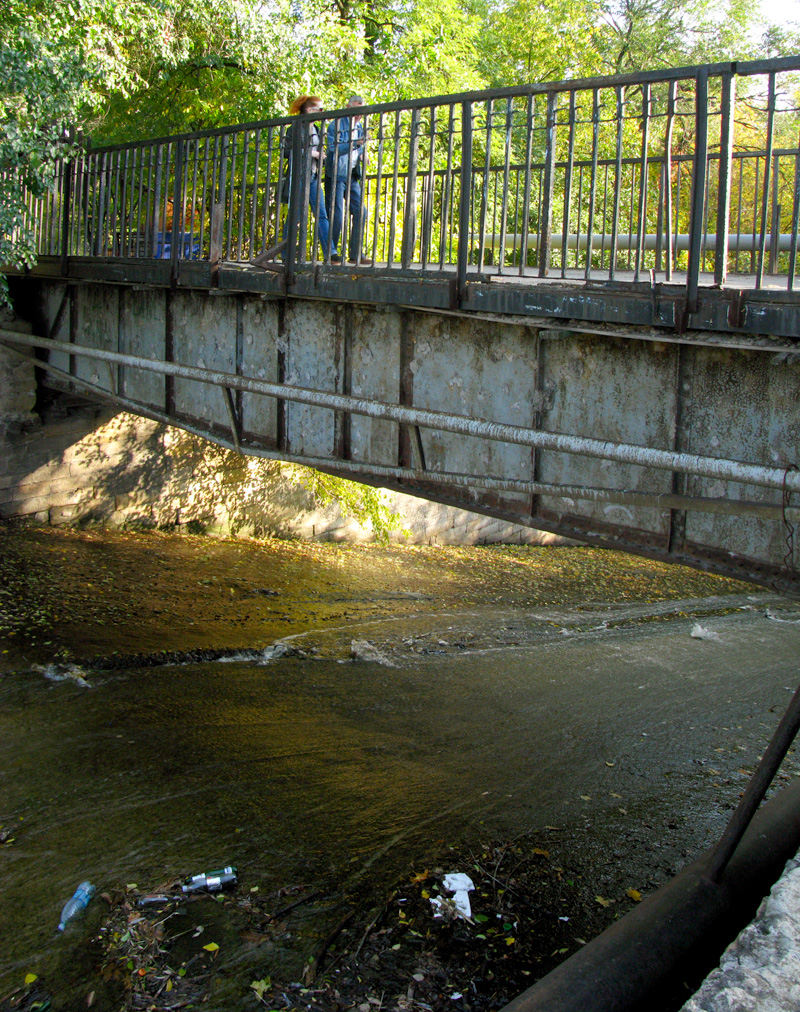
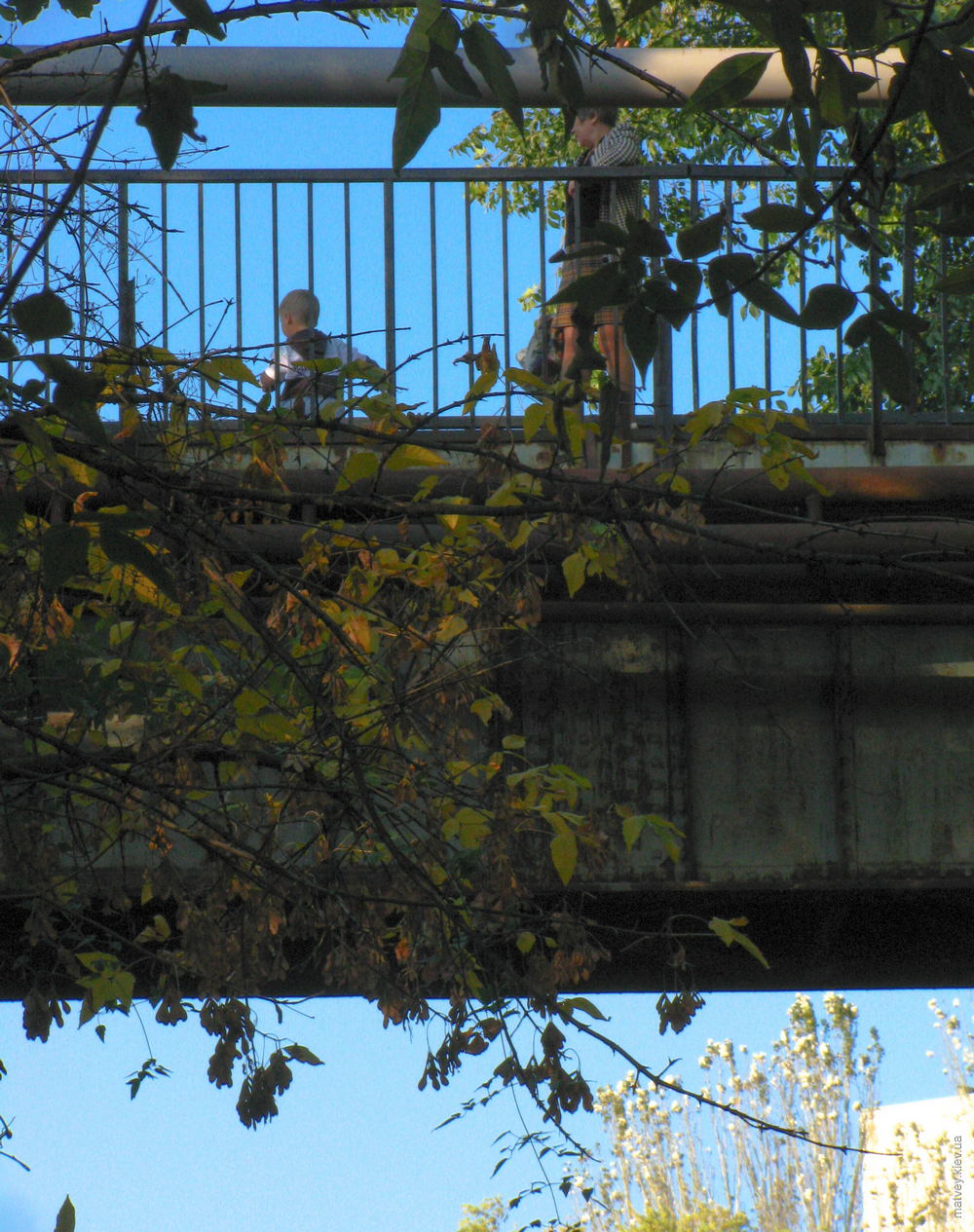
The spillway was made of concrete. A smaller metal footbridge was present in twenty meters from the one on the previous photo. The view from below:
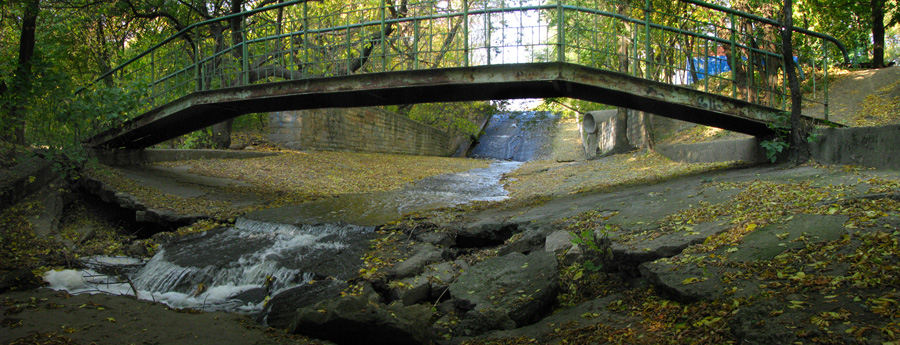
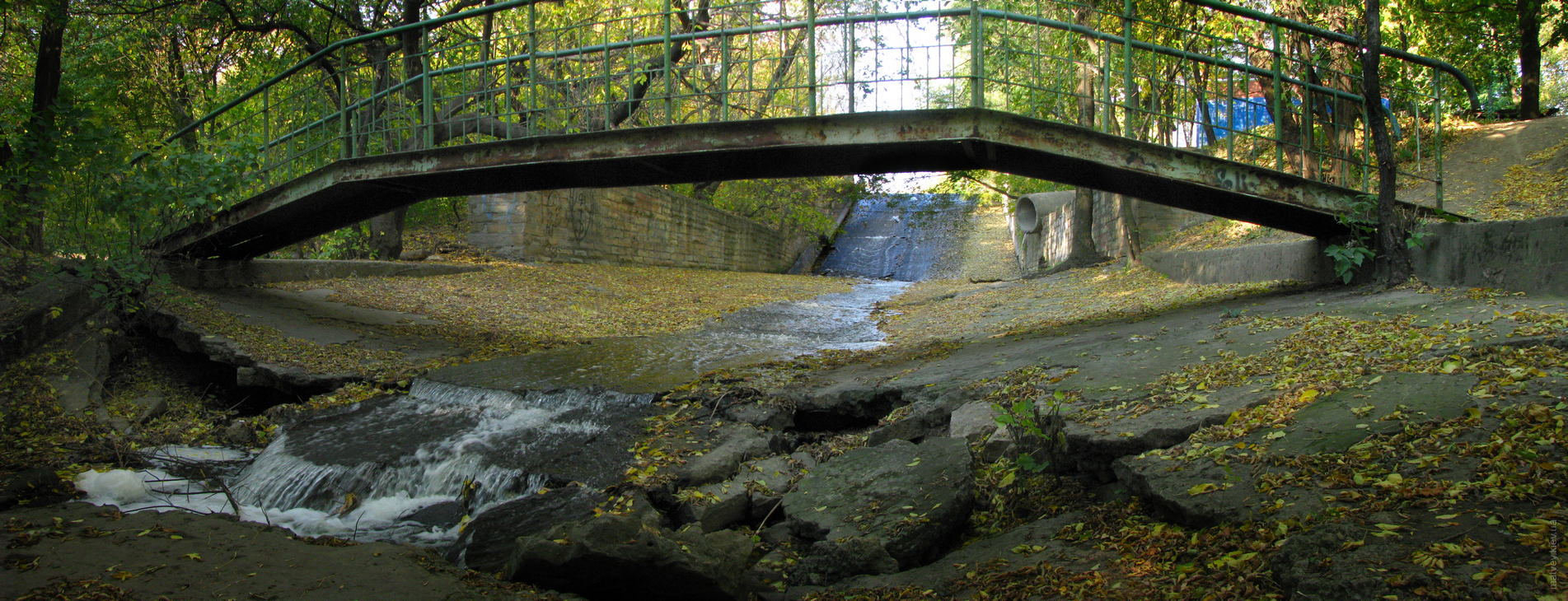
Another pipe opened into this spillway. Perhaps, it was a rainfall drainage.
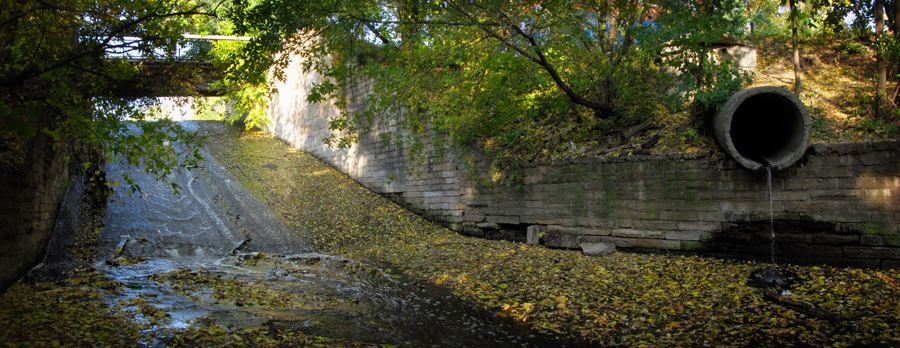
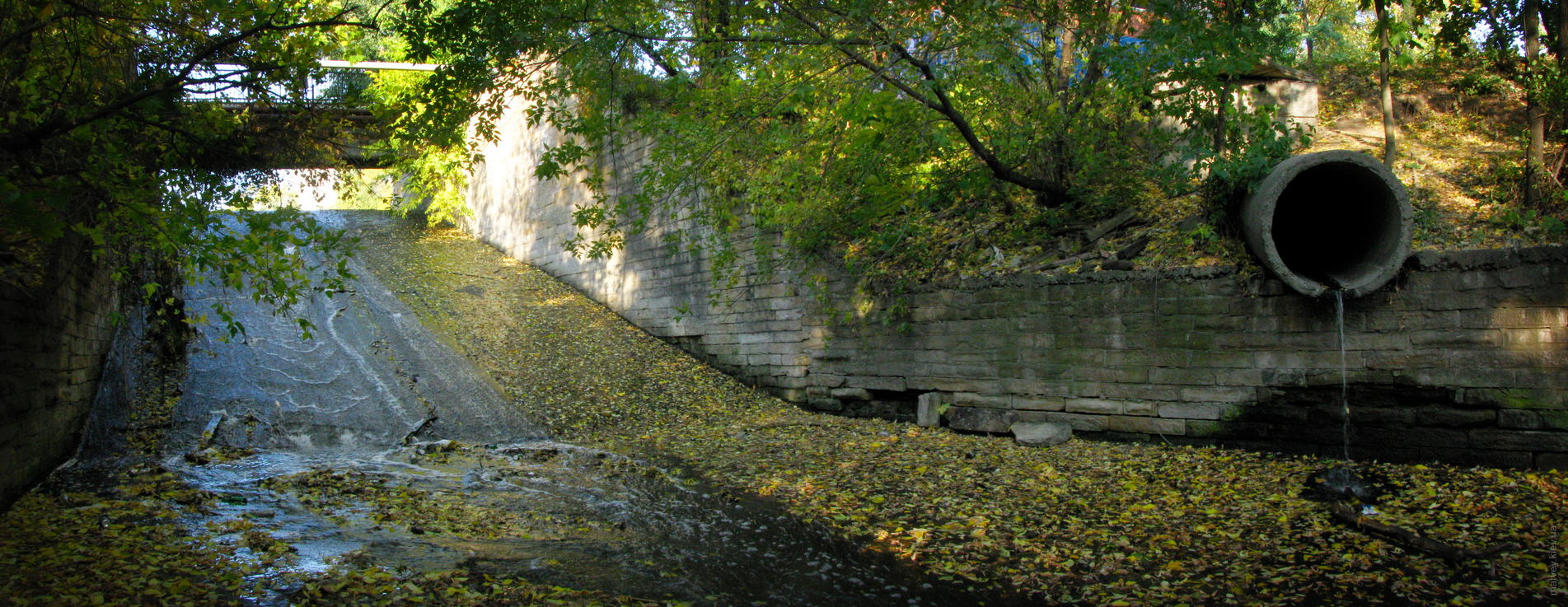
I went back to look at that metallic pier which did not seem significant after that cool spillway. This pier resembled a rusty marimba.
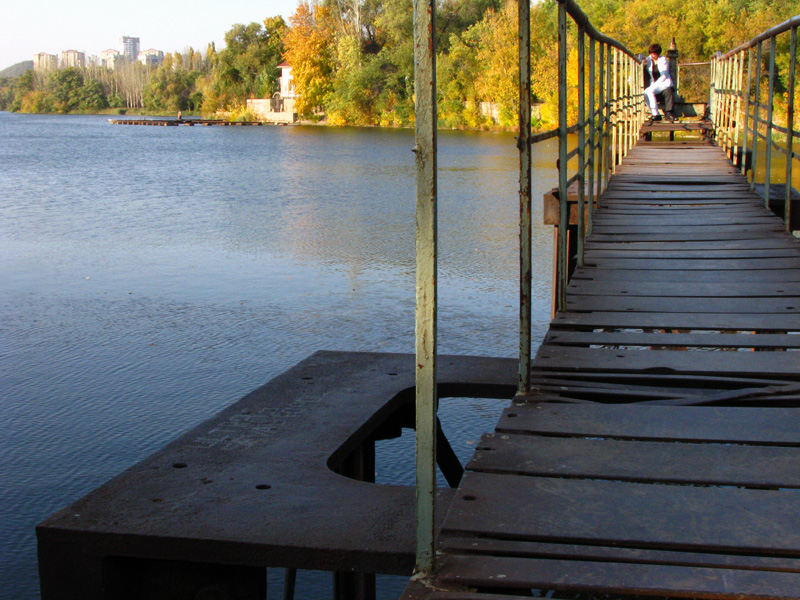
A service road over the dam.
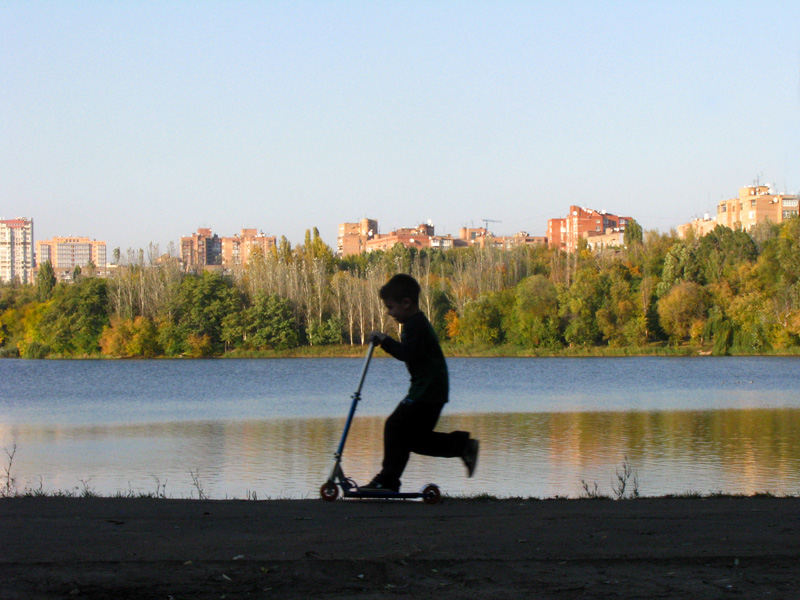
Several paths and stairs were going downstream. One stairway had an inviting bend of a pipe, so that no one had to duck under it. I accepted that invitation.
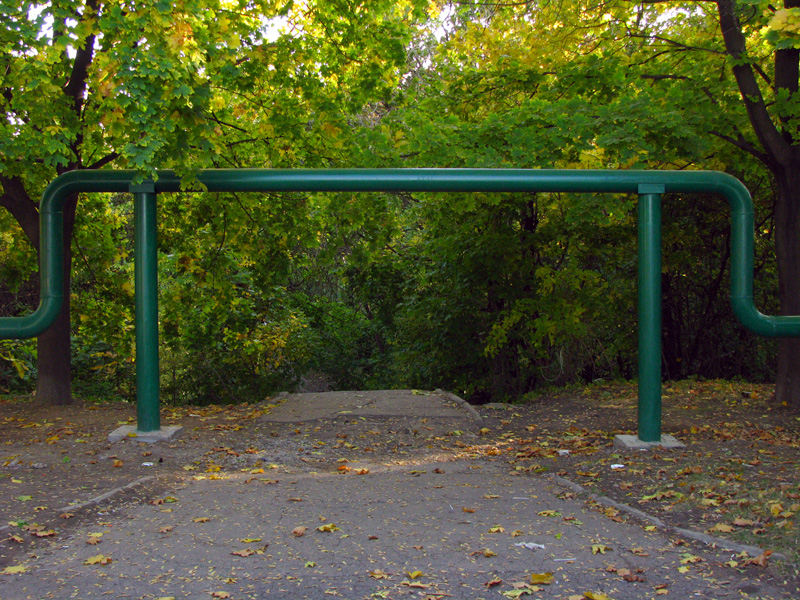
What could be there, downstream? There was the edge of another pond — the one that was named «city pond number 1». The trees were standing somewhat sadly.
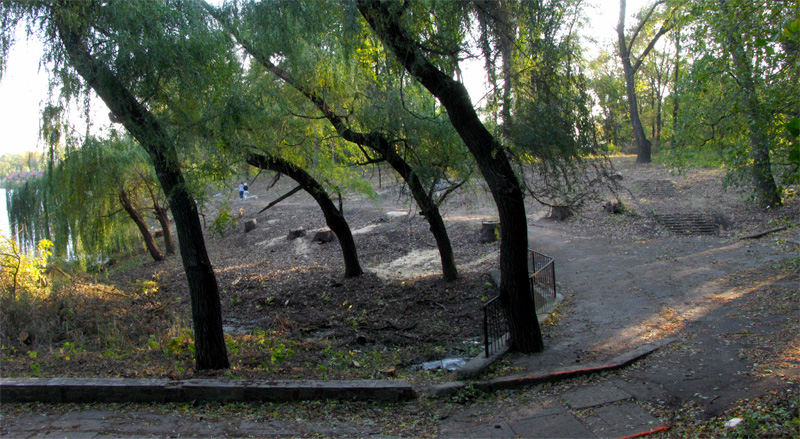
An abandoned open cinema was standing nearby, amidst the vegetation. The fence was old and broken. The projectionist's booth was elevated on four legs. I did not go inside, because I presumed it would be stinky inside.
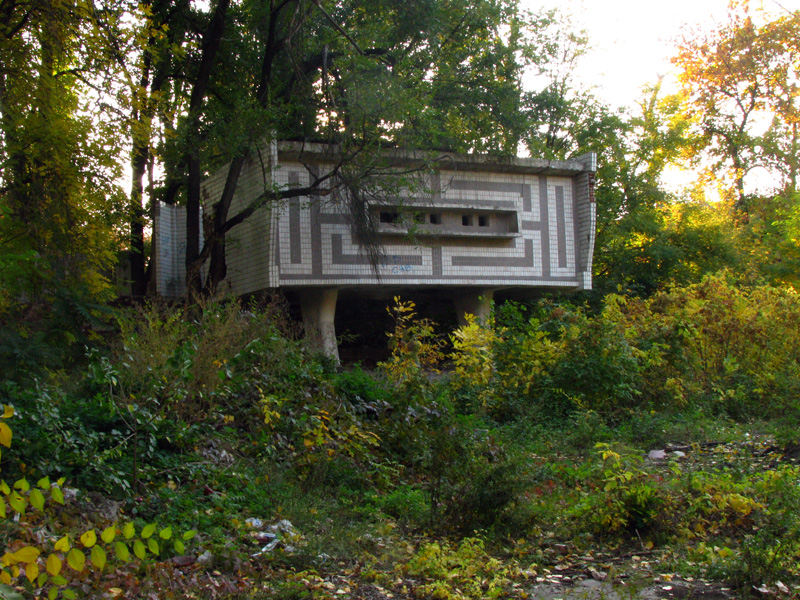
The stage and the screen with lazy graffiti on the topic of Carlos Castaneda.
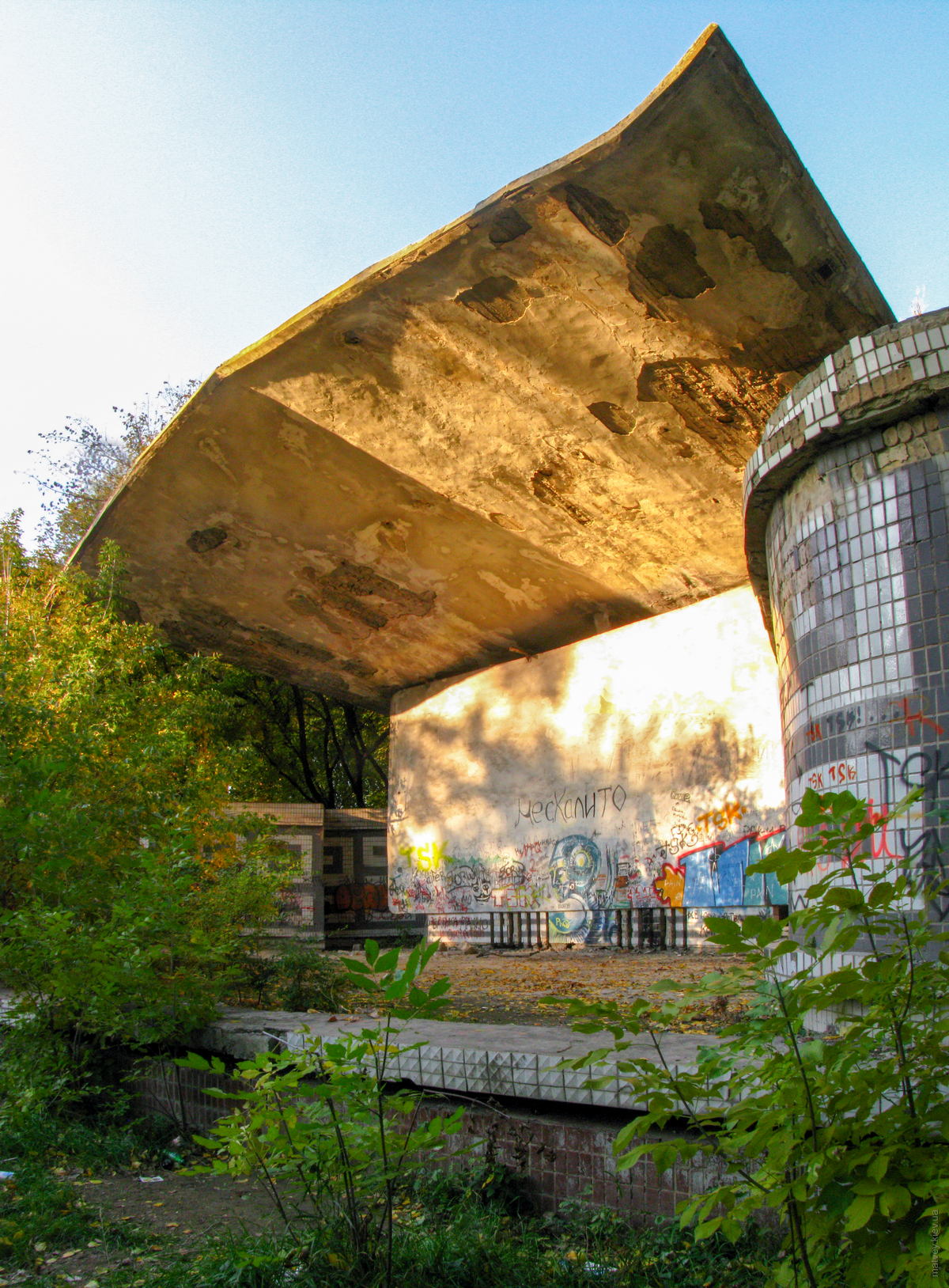
This footpath led me to an opening near the pond edge.
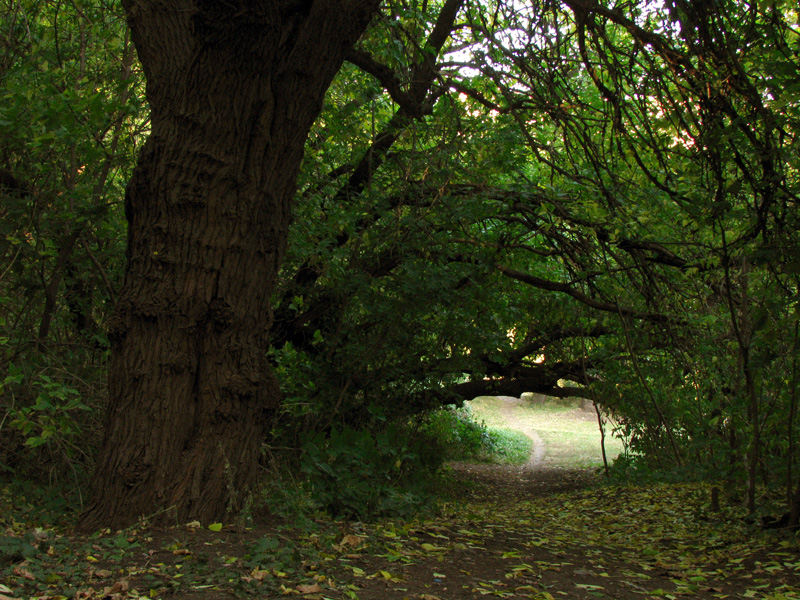
From that small grassy glade, a large rusty faucet could be seen in the water at some distance from the shore. The faucet was spewing stinky water, which led me to the conclusion to never swim in these ponds.
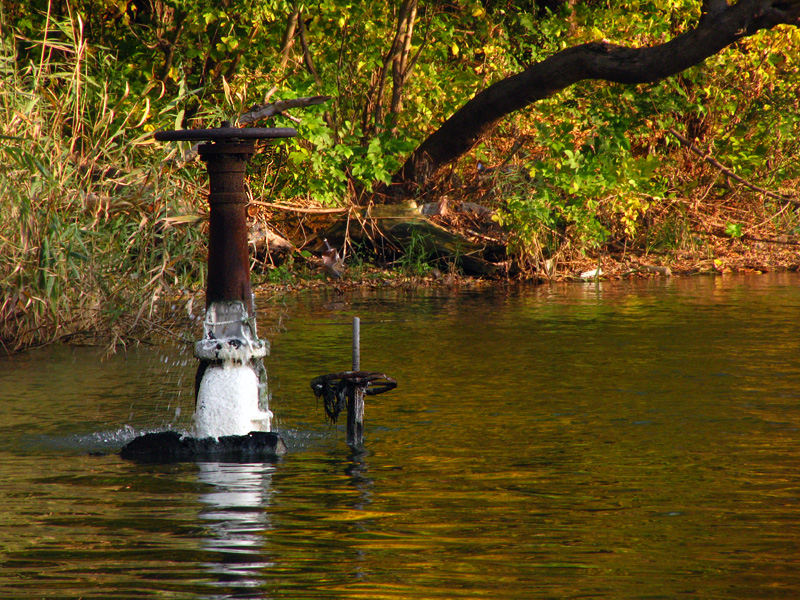
I continued my scouting. The next path was more jungly, and led me to the mouth of the spillway stream's influx into the first pond. The tiny Bakhmutka (or Skomoroshynka) stream even had a small delta here — branching into two. A wooden log was bridging the shores of the stream, the distance between which was inside the limits of an average human jump.
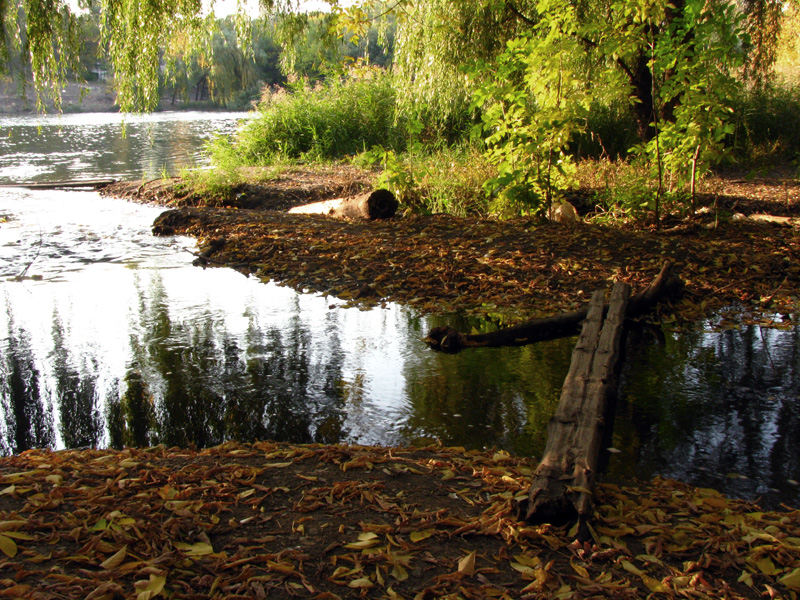
I was getting close to the civilised part of the Shcherbakov park. A few decayed places were left, such as this footbridge that had nothing flowing under it. Perhaps, it was standing over an intermittent branch of the stream.
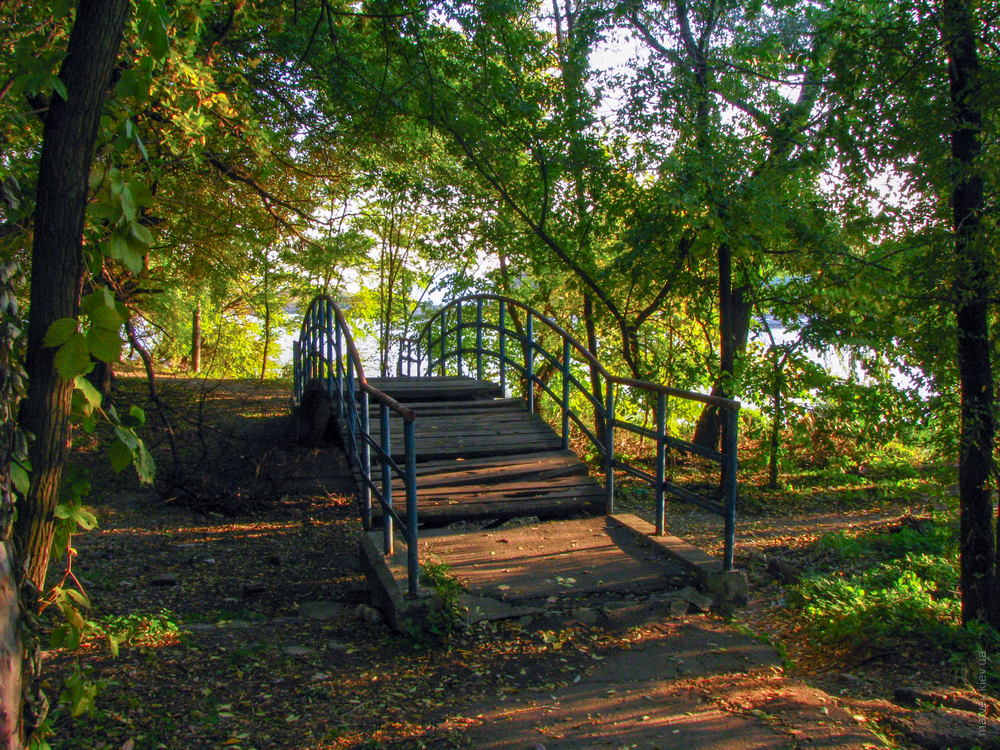
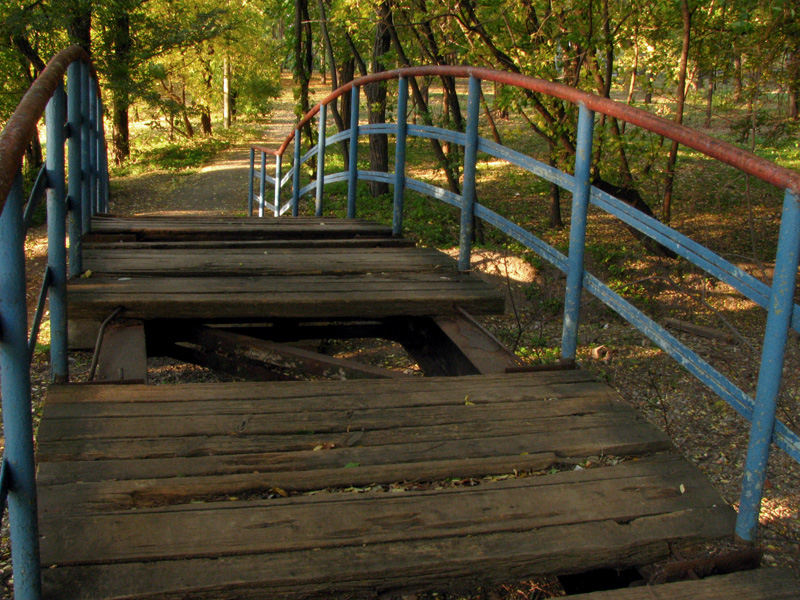
The quay here was decayed, though nice.
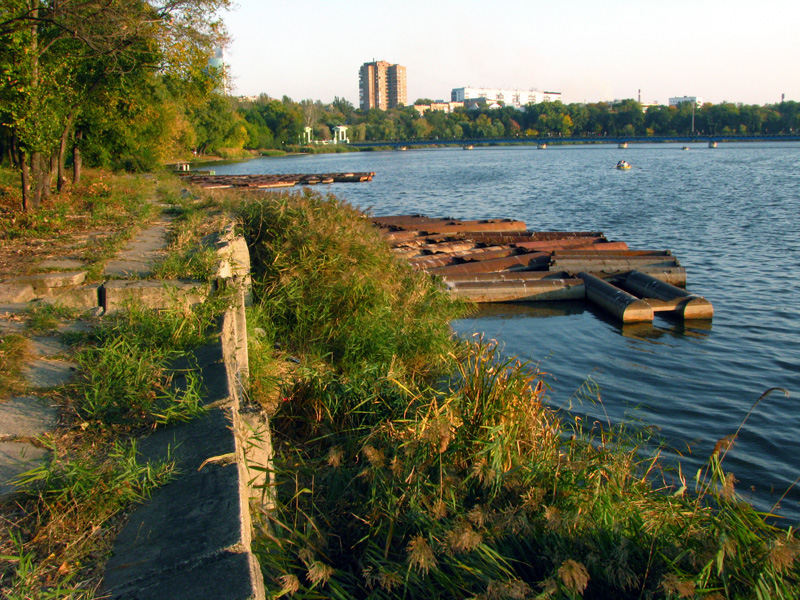
The world's narrowest stairs were made in the quay to access the water.
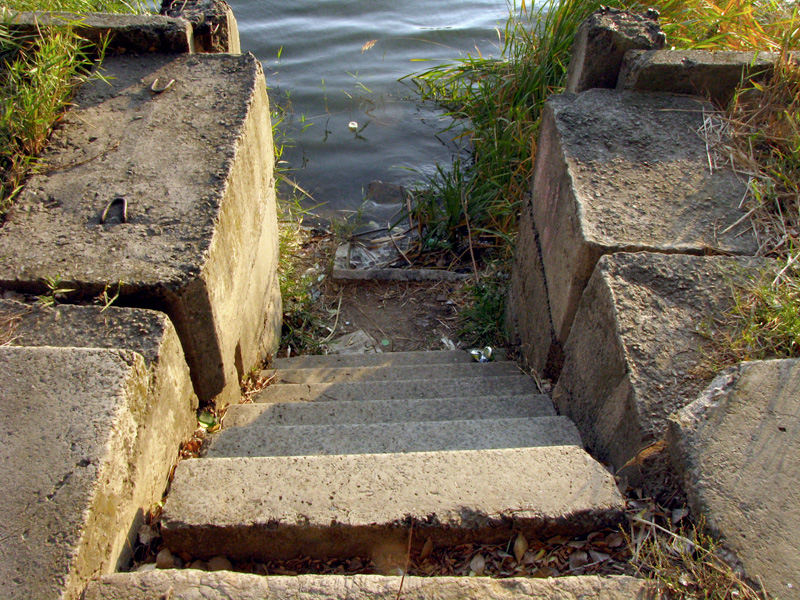
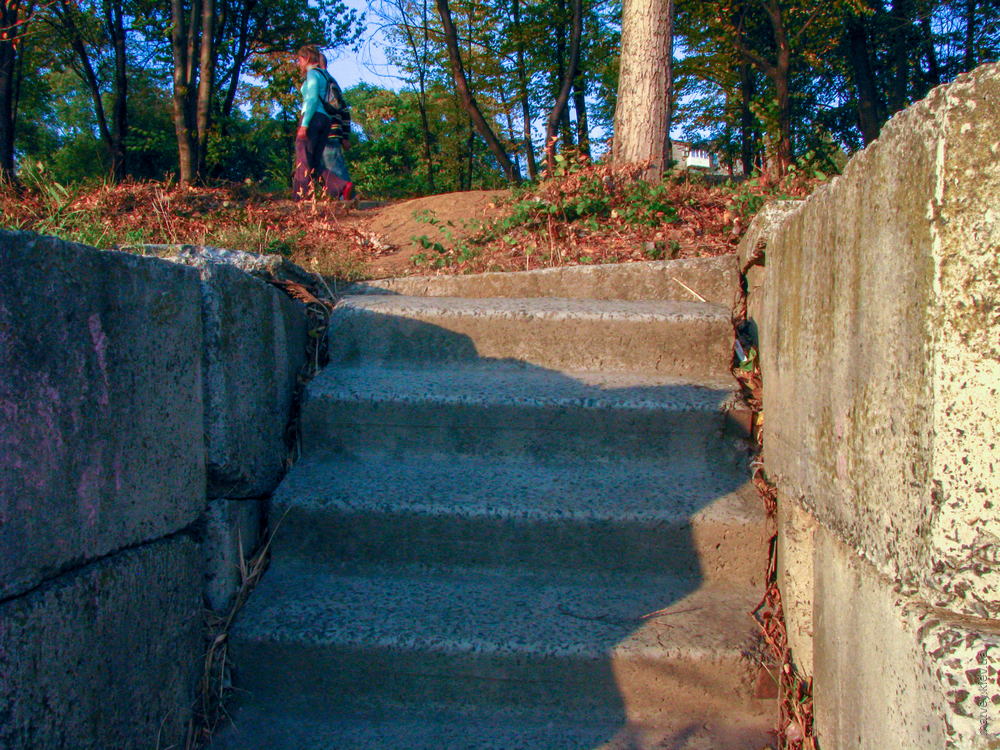
I could not jump onto these nice and numerous pontoons.
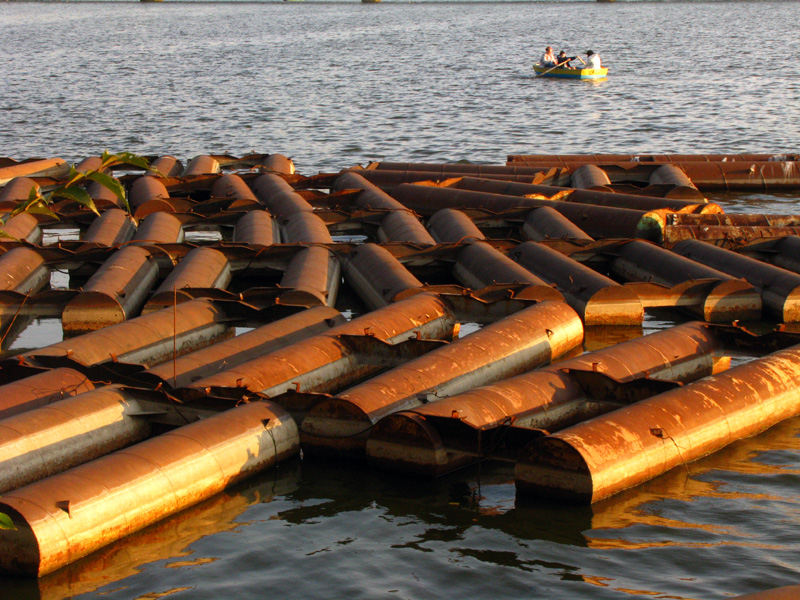
There was a fountain and a footbridge in the more civilized part of the park.
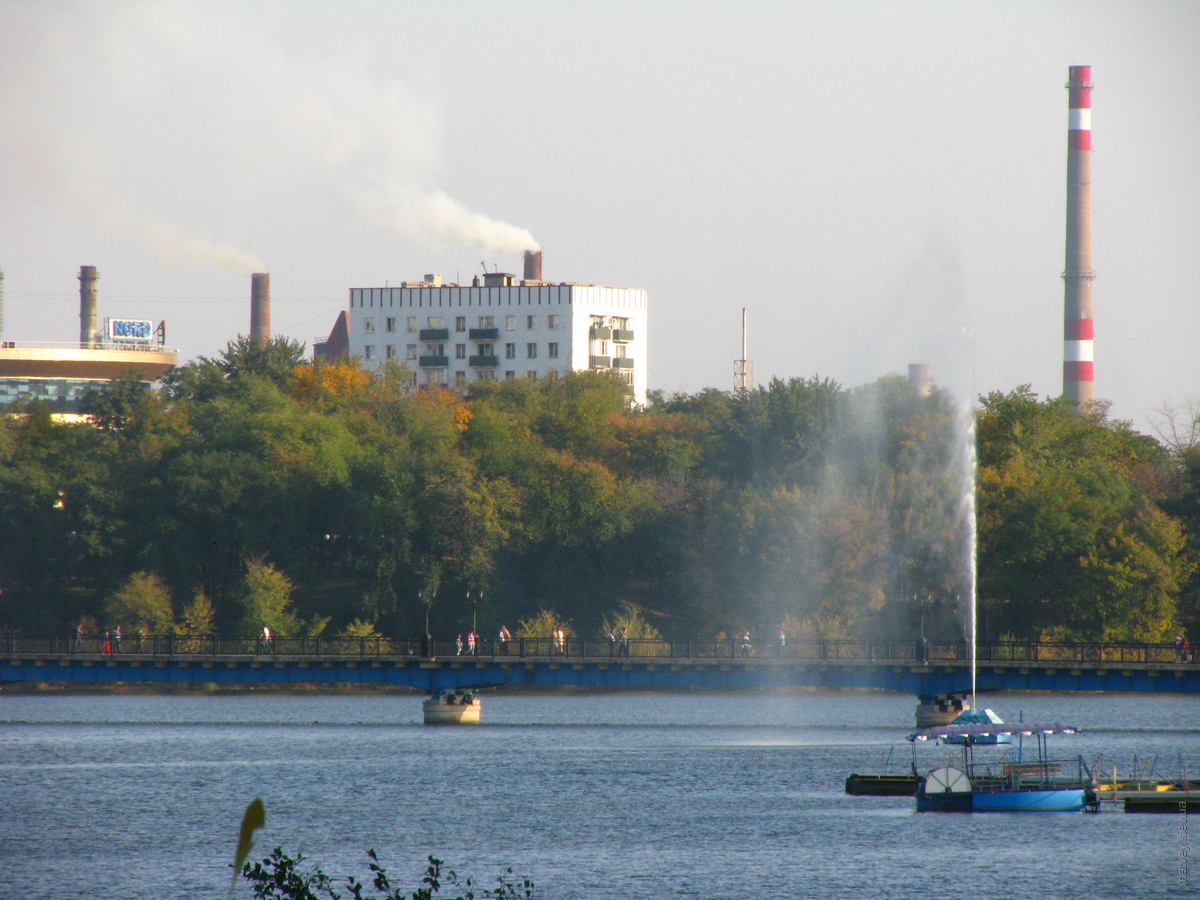
Our friends have accompanied us to this man-made hill somewhat more well-known among the many others. The formation on te top is what gave it its unofficial name «horned». This slagheap is inside the administrative border of Makiivka and was created by something called «Mine №6/14». The horns reminded of the eroded mountains in the USA, while not nearing them in any aspect. Some people are making a festival of something here periodically. We saw a pheasant in the vegetation while we climbed the hill. The bird retreated to invisibility faster than I got my camera out of a pocket.
Descending from a horn.
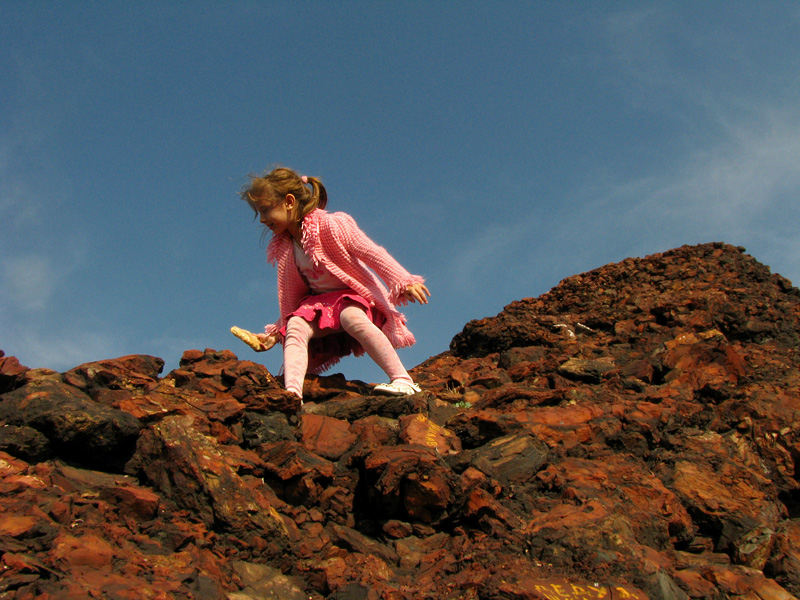
Many other slagheaps could be seen from the horned one. Here is the conical pile of waste from the Hansivka mine. It is standing near Kalininsky micro-district of Makiivka.
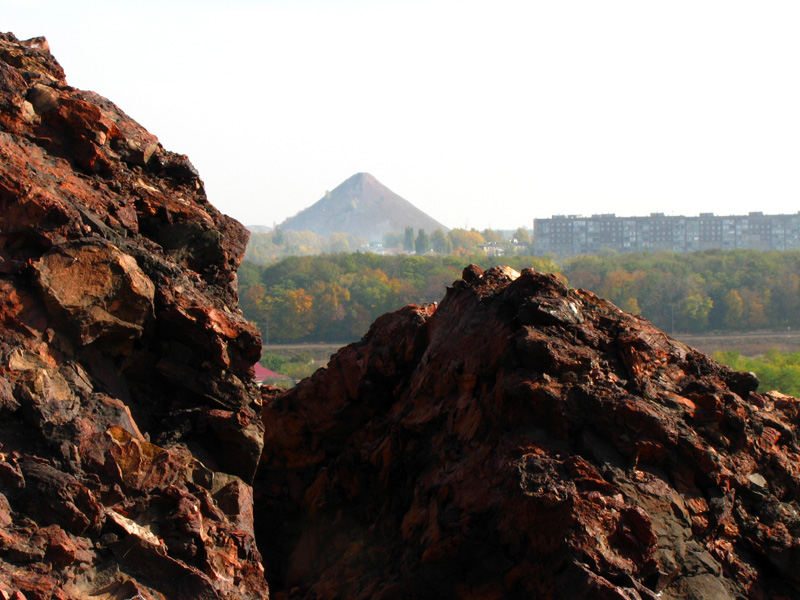
Some people said that this part of the horn formation resembled a dragon's head.
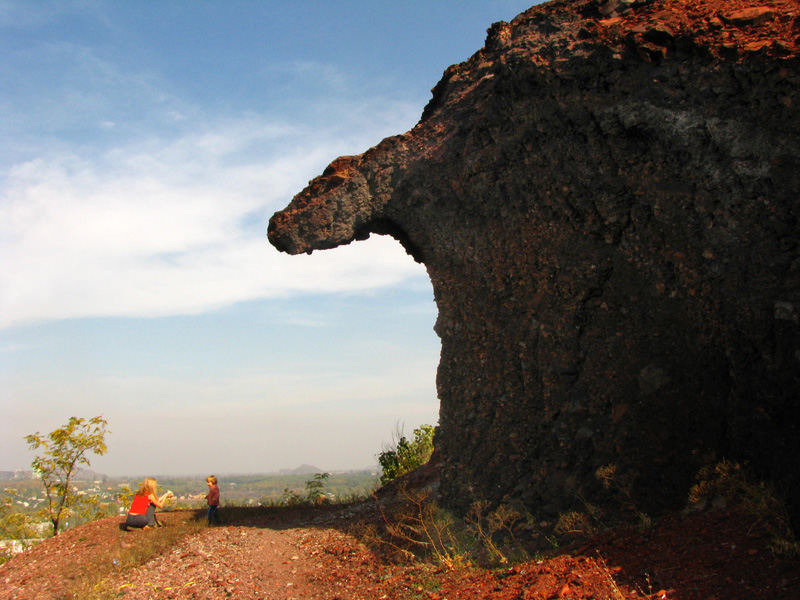
How can one get to the horned slagheap?
Get to the Chervonohvardiiska bus station, which resides at the bottom of this slagheap. Turn your face to the hill, and start circling it from its right side. You will see an unpaved road going up.
The way up the slagheap on Google Maps
Using public transport from Donetsk: from the Kryty market board any of marshrutka buses 107 or 121. Get out on the bus stop «Studentska» (called «mee-see» by everyone) on the Makiivka highway. Cross the road and wait for another marshrutka 30 going into the opposite direction. It will make a right turn and go past Hansivka district. Ride it till the end, which will be the needed bus station Chervonohvardiiska.
These are six of many random man-made hills of Donetsk and Makiivka.
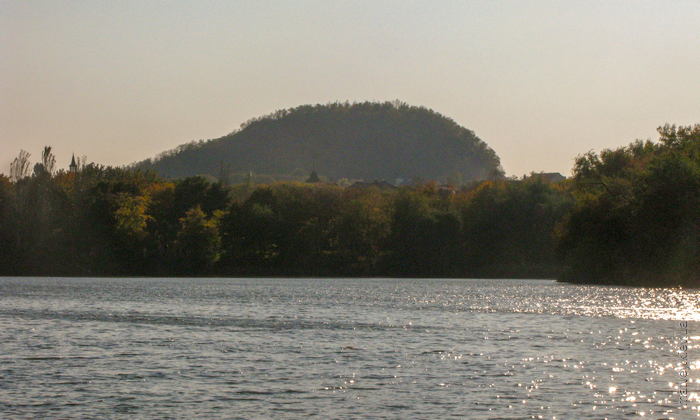 Livenka 4 mine's slagheap
Livenka 4 mine's slagheap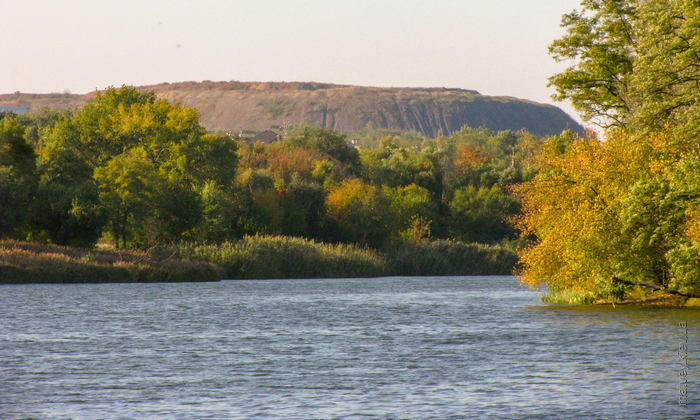 Slagheap of the Maksym Gorkiy mine
Slagheap of the Maksym Gorkiy mine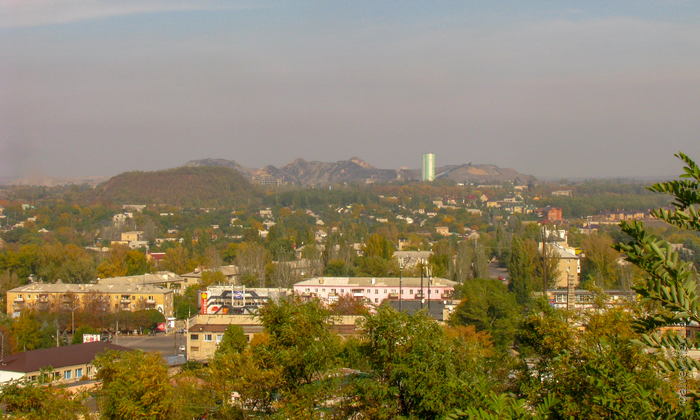 Waste dumps of metallurgy plants and of the enrichment factory «Kalmiuska».
Waste dumps of metallurgy plants and of the enrichment factory «Kalmiuska».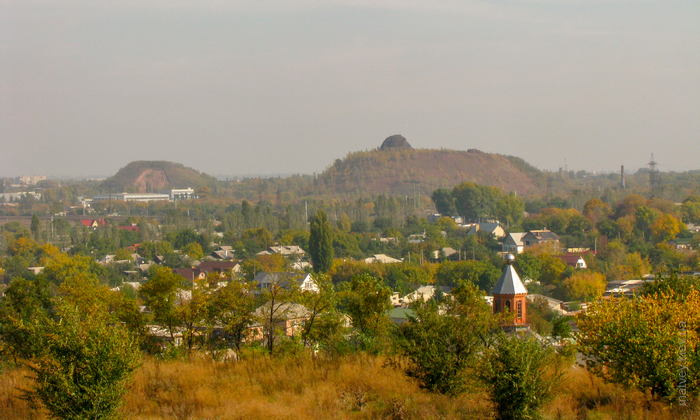 Slagheap of the Ordjonikidze mine
Slagheap of the Ordjonikidze mine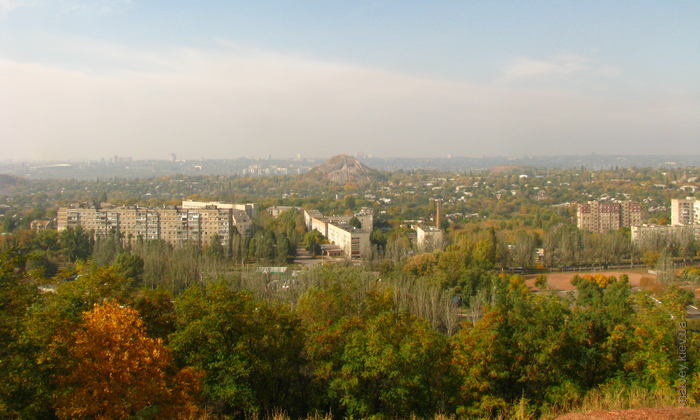 Slagheap of Sviatoserafimivska mine and Kronshtadtska str.
Slagheap of Sviatoserafimivska mine and Kronshtadtska str.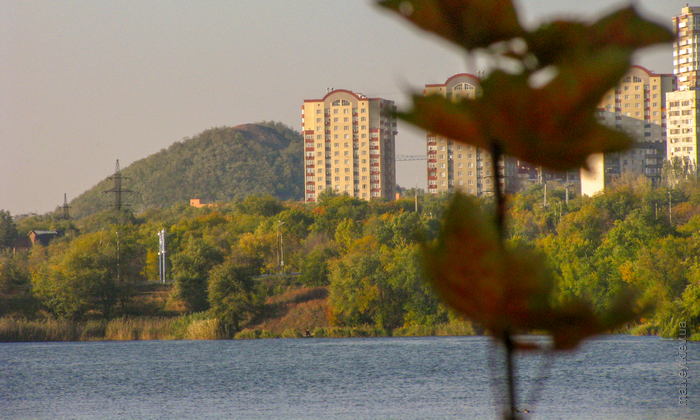 Slagheap of «Centralno-Zavodska» mine №3
Slagheap of «Centralno-Zavodska» mine №3